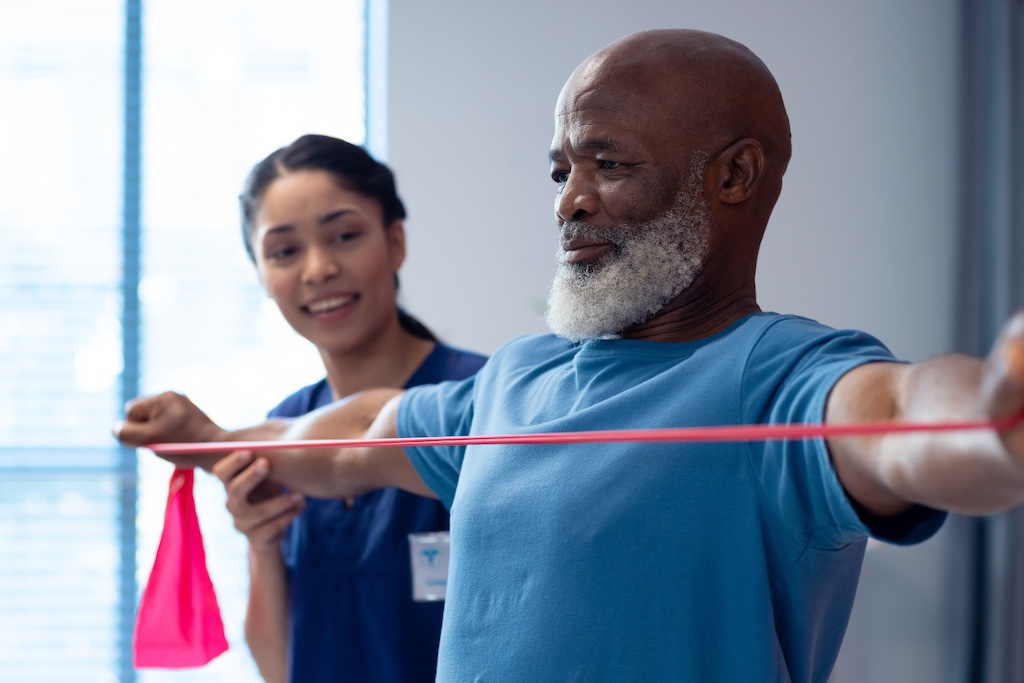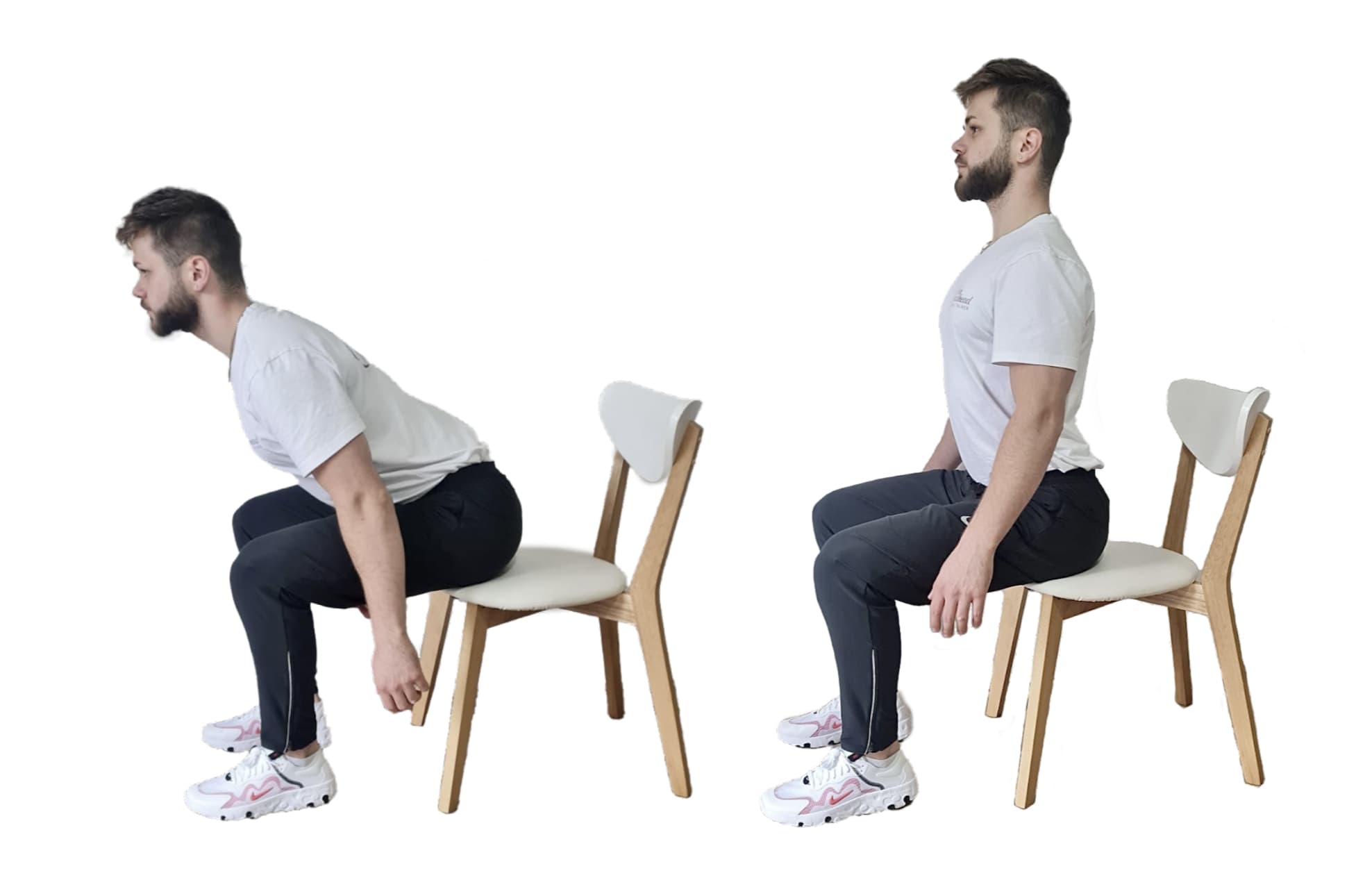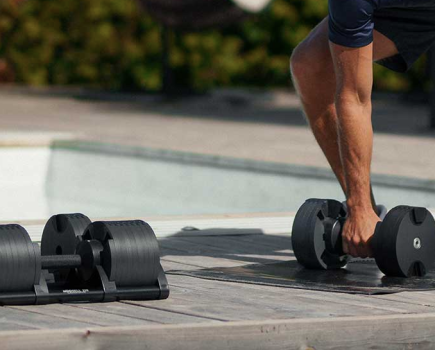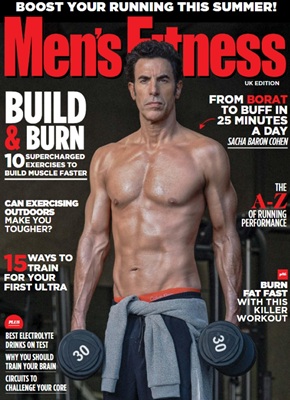Ben Broadhead is a personal trainer who specialises in working with seniors, both in care settings and privately. In this article he explains why strength training for seniors is so important – and how to do it…
Combine strength training with the best stretching exercises for beginners
As a personal trainer specialising in strength training for seniors, I’ve encountered numerous misconceptions regarding strength training. Most notably, the idea that it’s not relevant to seniors.
This point has intrigued me from the beginning of my career. We all subconsciously harbour the belief that fitness isn’t applicable to older adults. The mental image of a 90-year-old doing a bicep curl, for example, may raise eyebrows. There’s a sense of irony where there shouldn’t be. From my estimation, it’s because we think of weight lifting as a vehicle towards a particular physique as opposed to a means of achieving functionality.
Muscle atrophy accelerates in later life. It’s also true that each muscle in the human body has a functional purpose that is necessary for our independence. For these reasons, resistance training is more applicable to seniors than it is to any other group. The irony in my mind is that gyms aren’t exclusively populated by older adults.
A lot of us falsely believe that we cannot increase our strength once we’ve passed a certain age. While we do experience decreased levels of protein synthesis and growth hormone with age, we still maintain the ability to make significant improvements to our strength. This is particularly true for those starting from scratch.
Noticeable results can occur early on in a strength programme, due to neuromuscular adaptations, which cause more muscle fibres to be recruited than previously. Beyond this initial adaptation, we can continue to advance by remaining consistent and implementing progressive overload. That means to gradually increase the intensity of a workout, either by completing more repetitions, using a greater resistance, or adding another new element of challenge – it could be a pause, a slow eccentric phase, or an increased range of motion.
Fears and apprehensions are common among beginners. One that stands out is fear or injury. My response is simply to work within your limitations. If an exercise is not suitable, seek out a variation that is more appropriate. In addition to this, ensure that your progress is both incremental and sensible. There’s no harm in using the same weights for several weeks until you feel comfortable increasing the load.
Related content
- Weight training in old age lowers risk of an early death
- Weight training guide for men over 50
- Men’s Fitness’ pick of the best home gym equipment

“Training for strength offsets the process of age-related muscle atrophy”
Benefits of strength training for seniors
The benefits of strength training for seniors are profound. Its role in the maintenance of functionality ultimately leads to greater independence and quality of life. Musculoskeletal decline that occurs in seniors can be reduced and even reversed using a sound programme that includes both weight-bearing and resistance exercise.
Training for strength offsets the process of age-related muscle atrophy known as sarcopenia. Maintenance of muscle tissue means that joints are properly supported, we have stability in our movements, and we can perform tasks of daily living with minimal effort.
In addition to this, resistance training yields a significant increase in bone mass, subsequently decreasing the risk of osteoporosis and bone fractures. Falls and fractures are more prevalent in older adults, partly due to postural deviations that alter their centre of mass.
Age-related postural changes such as kyphosis (hunchback) typically occur when an individual doesn’t have adequate strength to maintain a neutral posture. Targeting postural muscles, particularly those in the core and back, will therefore counteract this deterioration, promoting proper posture.
An effective programme will prioritise movements that reflect the demands of everyday life, for example, a squat, which closely replicates getting out of a chair. This approach ensures that the exercises we do have transferability into our daily activities.
Need some light pair of dumbbells? Don’t miss out on this great deal!
Strength training for seniors: where to begin
The obvious starting point is to establish which exercises you’re going to do. Regardless of specific goals, it’s worth targeting all of the major muscle groups in the body. You may, however, choose to place emphasis on areas of weakness. For example, you could focus on strengthening the quads and hamstrings to create support around the knee joint.
The most important criteria are that you are comfortable with the exercises you’ve selected, that they are effective, and that you enjoy them. Remember that enjoyment is a prerequisite for sustainability. If you love your exercises, you’ll always find time for them.
Performing bodyweight exercises is unintimidating and provides a gateway into strength training. Once you’re familiar with the movements, you can then introduce some dumbbells, resistance bands, or even household objects like tinned beans to create resistance.
The next step is to think about how often you’re going to train. The NHS recommends that, over age 65, we aim to engage in strength exercise at least twice per week. I personally think that three times is ideal if you can manage it.
Actually, implementing exercise as a habit into your life is the most challenging part…
How to make exercise a force of habit
In my own life, I set aside specific time slots for exercise. If I don’t do that, I find that it’s easy to forget or procrastinate.
I have a client called Len who was having difficulty doing 5fiveminutes of exercise per day as I had prescribed. Being an artist, other tasks would take priority. I investigated his routine, discovering that Len would religiously drink two coffees every morning. I advised him to do his exercise in-between the two coffees, and the results spoke for themselves; he never missed a day.
There are a few reasons for this. Having clearly defined parameters meant that he couldn’t put it off or procrastinate. Finishing the first coffee and placing the empty cup on the side also created a prompt, making it almost impossible to forget. Lastly, knowing that he had to exercise before he could have his second coffee provided an incentive and reward.
If a pre-planned, structured workout feels unrealistic, the alternative is to do smaller blocks of exercise throughout the day. You could do some high knees while the kettle is boiling, lying leg raises in bed before you get up, standing on one leg while brushing your teeth (be careful), or even some seated crunches during the television advertisements. My clients continue to surprise me with their innovative ways to incorporate exercise into their days, so get creative and make it work for you.
Below are three simple exercises taken from my book 50 Exercises for Older Adults. These can be done at home without equipment and aim to improve health markers and functionality.
Select exercises that are suitable for your ability level, find ways in which you can implement strength exercise into your day with minimal friction, train with functionality in mind and, finally, try to enjoy the process.
Strength training for seniors: 3 of the best exercises for older adults

1. Bent-over row
Recommended repetitions: 10
Recommended sets: 2-3
Recommended rest: 45 secs
How to do it:
- Sitting up tall near the edge of your seat, start to hinge forward from your hips.
- Focus on keeping your chest up and your back straight. Looking directly ahead can help with this.
- Once you are almost horizontal, hold this position with your arms hanging by your sides.
- Pull your hands up towards your pockets in an up-and-down motion. Lead with your elbows and think about pulling your shoulders back to engage the muscles of the upper back.
- Control your arms back down to the start position and repeat.
Key benefits:
Rowing movements like this one target the muscles of the back. As a result, we gain strength that enables us to maintain upright posture.
2. Squat
Recommended reps: 5-10
Recommended sets: 1-2
Recommended rest: 60 secs
How to do it:
- Sit up tall with your feet shoulder-width apart.
- Tilt forward slightly from your hips while keeping a straight back.
- Press through the heels of your feet, bringing yourself to a standing position.
- Push your hips back slightly towards your heels and slowly lower yourself back into the chair, keeping your knees in line with your toes.
Key benefits:
The squat works almost all of the muscles in the lower body simultaneously, making it massively efficient for those short on time. Squats can also help us become more confident when standing up from a chair and walking.
3. Hip Hinge
Recommended reps: 10
Recommended sets: 2-3
Recommended rest: 45 secs
How to do it:
- Shuffle forward slightly in your chair, sitting up nice and tall.
- Slowly hinge forward from your hips, keeping your chest up and your back straight. Looking straight ahead can help with this.
- You want to hinge as far as you can while maintaining a neutral posture. As soon as your back starts to curve, you’ve gone too far.
- From this position, start to sit back up slowly, feeling the tension in your erector spinae muscles, which run down either side of the spine.
Key benefits:
This exercise targets the spinal erectors, two strips of muscle that run down each side of the spine. Their function is to straighten the back, allowing for upright posture.










